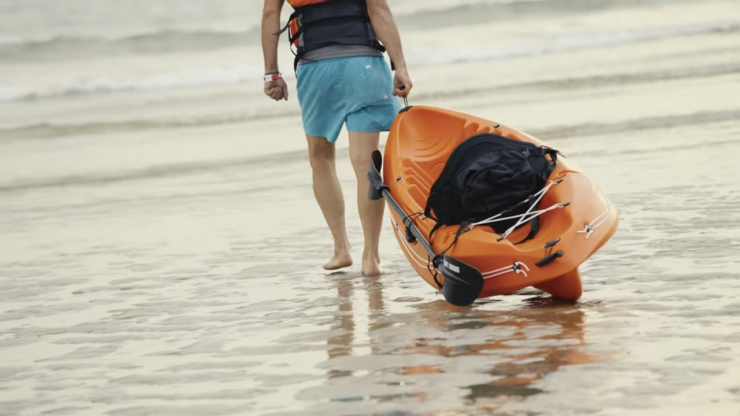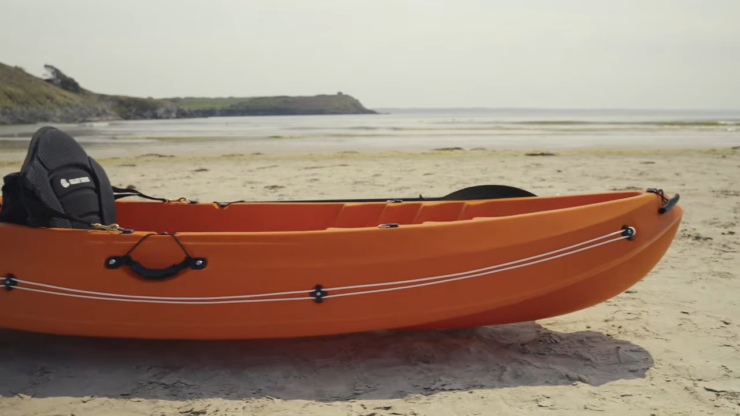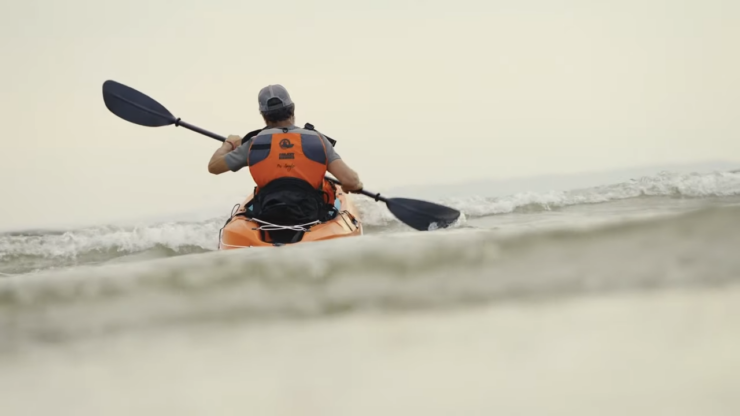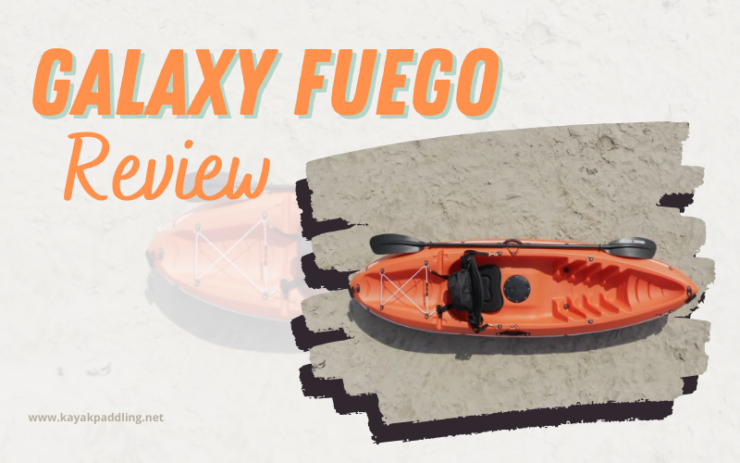When I made the move from the big smoke (Madrid, Spain) to the small coastal town where I currently live (Xàbia, Alicante), I was keen to get back to a sport I had practiced so much as a young teenager: kayaking. My new home is just 100 metres from the sea and although I love to dive, paddleboard and snorkel, kayaking is a must on this particular stretch of Spanish coast.
The waters are crystal clear and sea conditions are usually perfect for this sport all year round. There’s also an added advantage: EU and local legislation prohibit access to caves and coves if you’re using anything with a motor, so the only way to really enjoy the nooks and crannies is on a paddleboard or a kayak.
Choosing the right kind of leisure kayak for these waters is essential. Sure, the waters are usually calm and you’re never too far from a small bay or cove if you do need to get out of the wind or wake but the coast is also very rocky.
Millennia of sea action on its 20km limestone coast has resulted in extremely abrasive surfaces on all most of the coastline. I grew up using fiberglass Sprite K1s and K2s and was used to patching them up after pretty much every competition or weekend kayaking with my local troupe of sea scouts.
The slightest blow to them and you had a nasty hole. Of course, you rarely see those flimsy crafts now.
Seamless plastic molded hulls now mean you have very little maintenance to do on your kayak if it’s just being used for pleasure. One thing most plastic hull kayaks have in common is their durability, and that particular feature would top the list of ‘must haves’ when it came to purchasing one for use around this coast.
Table of Contents
ToggleMy Choice Of The Galaxy Fuego

I wasn’t just going to need one. I needed a couple because I run corporate training courses that include all types of watersports.
So, I needed a kayak that was not only resistant to the rocky shoreline but one that was also a good option for someone who had never used a kayak before. Ease of use and cost were also going to be two important factors. After a couple of days of researching on the Internet, I came across Galaxy, a UK-based company that specializes in fishing and leisure kayaks.
I could always sell the kayaks later on and get a fancier one. In 2014, the individual price per kayak was $386 and with the shipment (they have a base in Spain) the total amount was just over the equivalent of $870 for two. As per Galaxy’s web, this model now retails for slightly less, at about $350.
The price includes:
- A small splash bag (fits into the hatch between your legs)
- Standard, adjustable seat
- A two-piece paddle
- Eight D-rings (for clipping gear onto)
- Stern and bow screw-in drainage plugs
- Side, bow and stern handles for carrying it
- Four scupper plugs
- Paddle clips
- ‘Clips’ (short bungees) on each side to hold your paddle when not in use
- A three-year guarantee
That’s quite a lot of bang for your buck. The ten color options available were different varieties of camo from pink to black. I opted for ‘jungle’ and one called ‘desert storm’. After placing the order, the kayaks arrived a couple of days later.
I was actually pleasantly surprised. I was expecting a poorer quality product given that the Fuego is Galaxy’s most basic model. Compared to others I had seen online, this one looked like it offered a lot more and that was, in the end, what motivated me to buy it.
I wasn’t disappointed. The Fuego seemed to be very solid; the different appendages were of acceptable quality – the seat and paddle looked like they’d last a few years as long as you took care of them and the bungees, handles and fittings were well made.
The Main Disadvantage Of The Galaxy Fuego

We were anxious to test them out so, we got our gear ready and prepared to load the kayaks onto the car. That’s when I discovered something about them that I didn’t like: they are seriously heavy!
The Fuego has a fairly wide keel and a ‘chunky’ bow and stern, which all add to its stability, as I discovered. But the flipside is that the weight: 18kg (40lb) when dry. That might not seem like a very heavy craft but when you add the seat, airtight container with some food and water and the paddle, you’ve already done a workout by the time you walk the 100m from your car to the shore.
In my current location, I have to walk down about 50 steps to get to the shoreline and it can be a bit of a struggle. We usually load one of the kayaks with all the gear for both kayaks and carry it down between two and then I carry the other one down myself by raising it over my head.
It’s doable but it’s not an easy task, especially if you have to walk on rocks or stones. You can, of course, use a set of wheels as the Fuego is designed to adapt to most options available on the market for this type of kayak but that won’t help you on sand or going down slopes, etc.
So, the Fuego is a heavy kayak. Not good. However, once you’re on the water, you forget that particular downside because the trade-off is obvious: it’s incredibly stable even in slop. I’ve had them for five years now and when I bring a client out, even the rookies manage to stay in the kayak.
Only one guy capsized and that was because he took a wave side-on – he’s well over six feet, so he was kind of top heavy. One dunking in about five years is not bad at all. I would say that 90% of the people we’ve had out in them (young teens to retirees) hadn’t kayaked before and they found the experience very enjoyable.
No-one felt insecure or unstable, which, let’s be honest, is a common occurrence if you’re new to kayaking. Like everything new, they take a little getting used to and a bit of tweaking. I weigh about 95kgs (max load on the Fuego is 150kgs) so I need to make sure my seat is straight to keep my weight slightly forward.
Otherwise, water will come in the back if you have waves or wake behind you. The stern has a concave area with bungees to store a sealed container (not included). So, if you carrying that and it’s full of gear such as water and food, plus fins and a mask on top, you can end up pointing the bow upwards and sinking the stern.
These can be handled easily when you’re in the kayak on the water. Then there are an additional two higher straps that keep the backrest in an upright, semi-rigid position. These are better adjusted on land. Although we did upgrade our seats to the ‘deluxe’ version, the standard seats are pretty comfortable too.
My First Experience With The Fuego

The real test for the Fuego came brought them onto the shore. As I said, where I live the coastline is rocky and you can shred your feet on rough surfaces. I was worried the Fuego wouldn’t be up to it. It absolutely is. We’ve being beaching these kayaks on the sharpest of rocks for a few years now and the hull is completely gouge-free. Sure, they have a few scrapes but that’s to be expected.

The Fuego’s 270cm length is perfect for maneuvering around rocks and anchored boats in calm weather and it’s just the right length to make you feel safe and comfortable if you get caught out in chop.
There are four positions for your feet, depending on your height so it’s a comfortable craft for long journeys as you have a bit of leeway for stretching your legs without upsetting the kayak’s stability.
Its 80cm width means that you’d need to be very tall and get hit sideways with a fairly sizeable roller to end up in the soup. The scupper plugs are handy too, although the ones that are located aft are too far under my hamstrings to pull out in any sort of rough weather.
When I need to drain, I lean forward and pull out the bow plugs. These can be stored in the splash bag that’s under the round hatch between your legs. It’s a system that works very well although the hatch won’t close if the splash bag is not correctly inserted.
Maintenance Of The Galaxy Kayak

After using the Fuego, you need to be sure to wash and rinse the seats and splash bag and take the tension off all the bungees. If you leave them taught, they will lose their strength quite quickly.
The screws holding the d-rings in place are stainless steel so they don’t require too much maintenance but I’ve had these Fuegos for about five years now and I find that they do require an occasional scrub.
They also need to be tightened ever now and then. When draining the kayak, its weight is, again, a bit of an issue. You need to stand it vertically for it to completely empty out and if there’s any wind, it can be a bit uncomfortable. You certainly wouldn’t want to lose control of it and drop it on a rock or worse.
You need to make sure you have a good grip of both side handles and tilt it slightly towards you.
Last Words On The Fuego
All in all, I was impressed with what I got for my $386. Sure – it’s a heavy enough kayak but the upside is its stability. We’re used to relatively calm waters on our coast but if you happen to be get caught out in breakers or have to zigzag your way back home through oncoming motorboats, you won’t feel insecure at all.
The Fuego takes it in its stride. As experienced kayakers, my partner and I do a lot of coast-hugging, sometimes up to 25km in a morning and the Fuego is a trusty companion. When we head a few miles out to sea, perpendicular to the coast, it’s nice to know you’re sitting on something solid.
The Fuego is a good all-rounder and it’s a kayak you can enjoy with your partner or kids. The issue with its weight is offset considerably by the stability you get from its wide, stocky keel and its general feel of indestructibility.
Adelaide Gentry, a seasoned kayaking enthusiast and expert, is the driving force behind KayakPaddling.net. With over a decade of experience navigating the world’s most challenging waterways, Adelaide combines her passion for adventure with a deep knowledge of kayaking to provide insightful and practical guidance for paddlers of all levels.
Related Posts:
- Heavy Duty Fishing: 11 Best Rods And Reels For Big Fish 2024
- 10 Best Saltwater Fishing Boats - Ultimate Angling Adventure
- 16 Best Kayak For Beginners 2024 - Kayaking Adventure Gear
- 10 Best Sit-Inside Fishing Kayaks 2024 -…
- 12 Best Kayak GPS 2024 - Find Your Way to Adventure
- 12 Best Fishing Lures Ever 2024 - Baits That…












